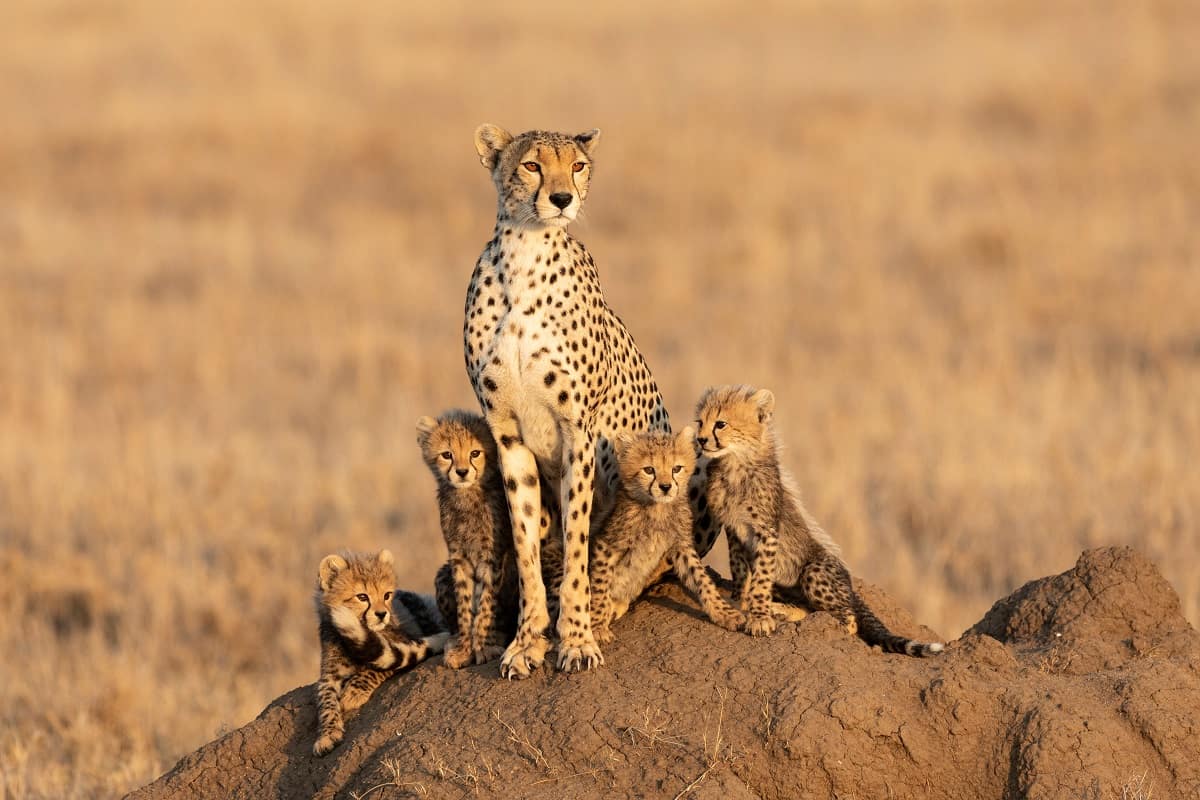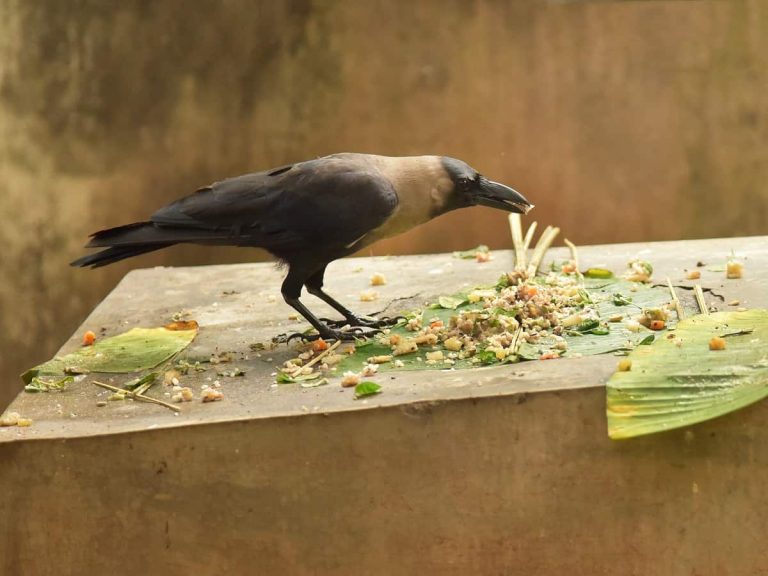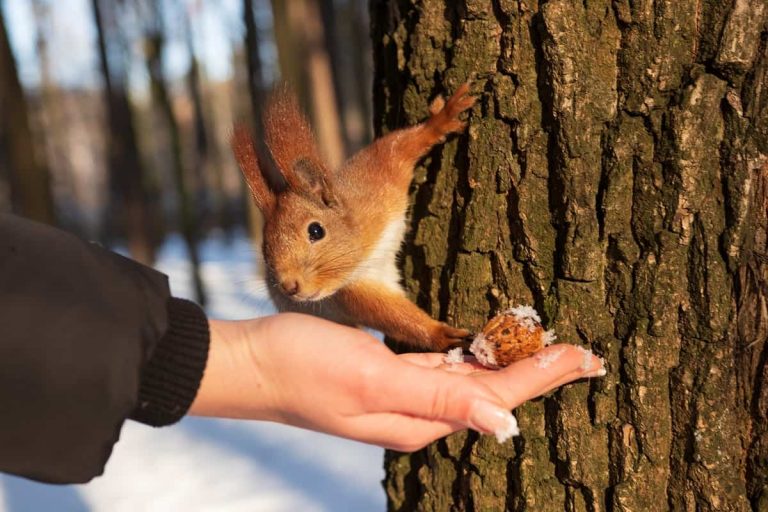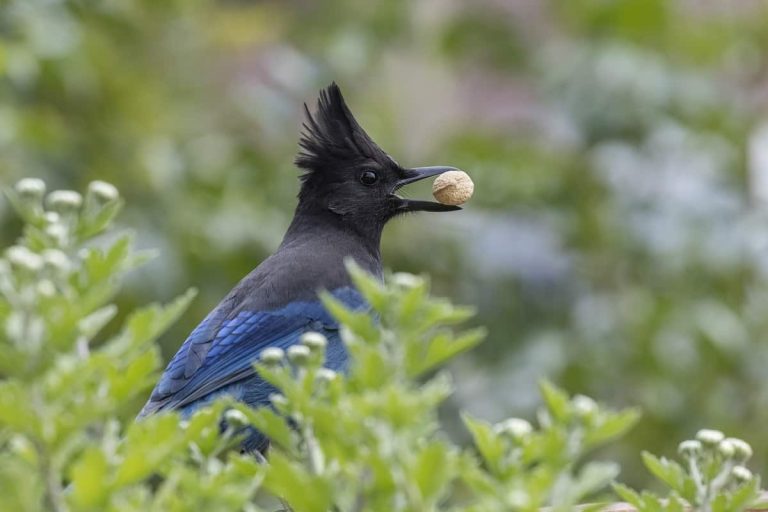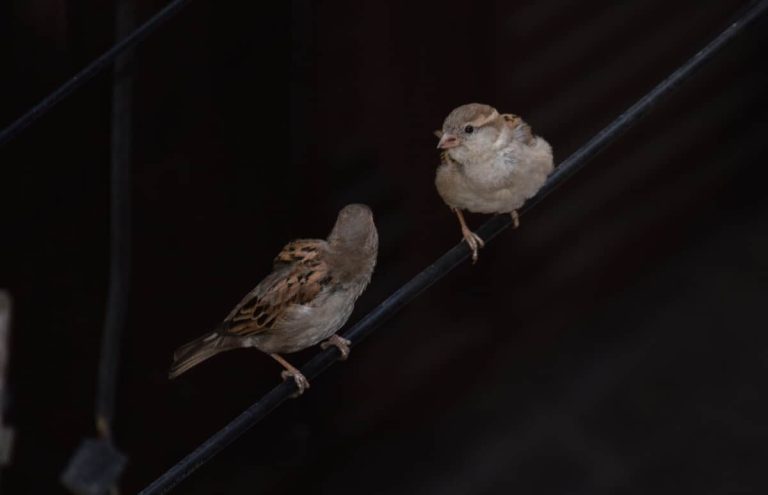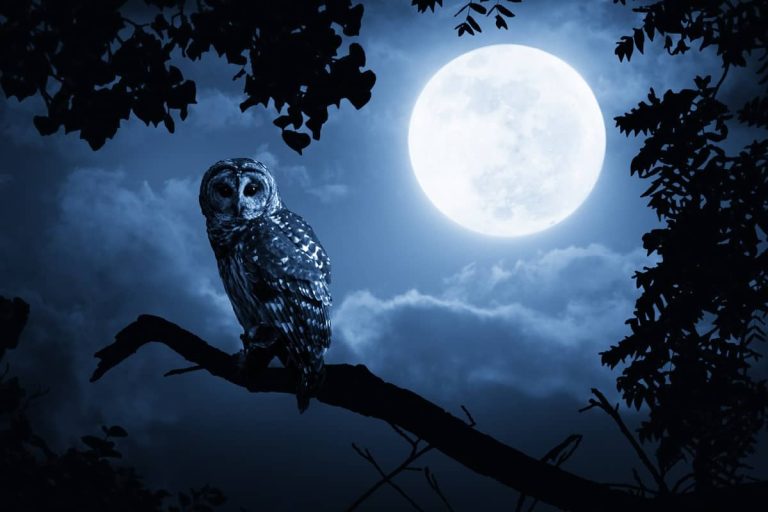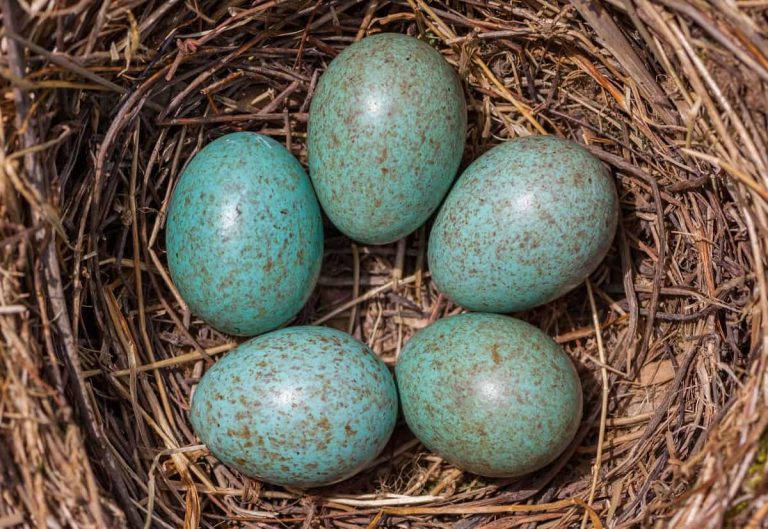Cheetah VS Leopard Print: Know Your Wild Cats
As both species are big wild cats, Cheetahs and Leopards often get mistaken for one another, especially if the eyes of the beholder are too far away or inexperienced.
If you take a cursory glance at images of both cats, it’s easy to notice an initial visible difference: the tear-like black lines on the Cheetah’s face, which are not found on Leopard’s face.
But that is only one difference. There is a whole list of dissimilarities between these two felines, most of them related to the color patterns of their fur.
Did I get your curiosity? Keep reading, and you will discover the distinctions between the print of Cheetah and the print of Leopard.
Cheetah
The Cheetah (Acinonyx jubatus) is the only species in its genus (felines with semi-retractive claws) and the fastest animal on land; its body is built for speed instead of strength and aggression, as is the case for many other wild felines.
A Cheetah goes from 0 to 84 kilometers per hour in only 3 seconds, it can reach a top speed of 128 kilometers per hour, and its average speed is between 93 and 98 kilometers per hour.
Unlike a Leopard, a Cheetah’s body has a considerably lighter-build. It has long, thin legs and ends with a long tail.
The animal’s name comes from the Hindu word “Chita”, which translates as the “spotted one”, the “painted one”, the “variegated one”, or the “adorned one”.
Back in the past, due to the possibility of taming it, the Cheetah used to be called the “hunting leopard” (this might be one of the reasons for our confusion today between the Cheetah and Leopard.). People used it for a particular technique of hunting – chasing the prey by sight instead of sniffing its scent, and catching it by speed.
Native from central Iran and Africa, the Cheetah has four subspecies, differing in the print patterns from one region to another: Asiatic Cheetah, Southeast African Cheetah, Northeast African Cheetah, and Northwest African Cheetah.
The color pattern and the spots on the Cheetah’s fur have the role of camouflaging the animal from predators or hiding it from prey while hunting.
The Cheetah can be distinguished from the Leopard by its round or oval, evenly spaced, solid black dots covering the lighter shades of the ‘background’ fur.
The black stripes resembling tears is common to all subspecies of Cheetah, and it’s speculated that it has a role in protecting the eyes from the sun and helping it focus on its prey, acting like a rifle scope.
The shade of background fur and the distribution of the dots vary from one subspecies to another:
Asiatic Cheetah
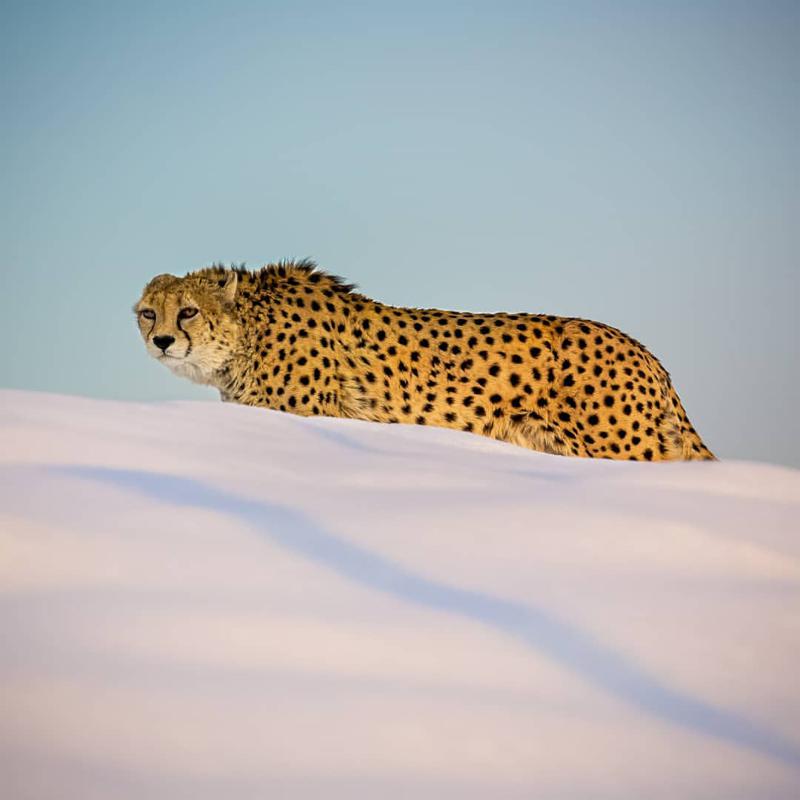
The Asiatic Cheetah (Acinonyx jubatus venaticus) has a yellow-cream coat that gets lighter below the eyes, on the muzzle, inner shanks, and sides.
The distinctive black dots are sprinkled randomly all over the animals’ tail, paws, and body, except for the head and neck, where the tiny black dots are placed in lines.
The tail of the Asiatic Cheetah ends with a black striped tip, it also possesses shorter fur and a subtle main – characteristics typical to the subspecies.
Southeast African Cheetah
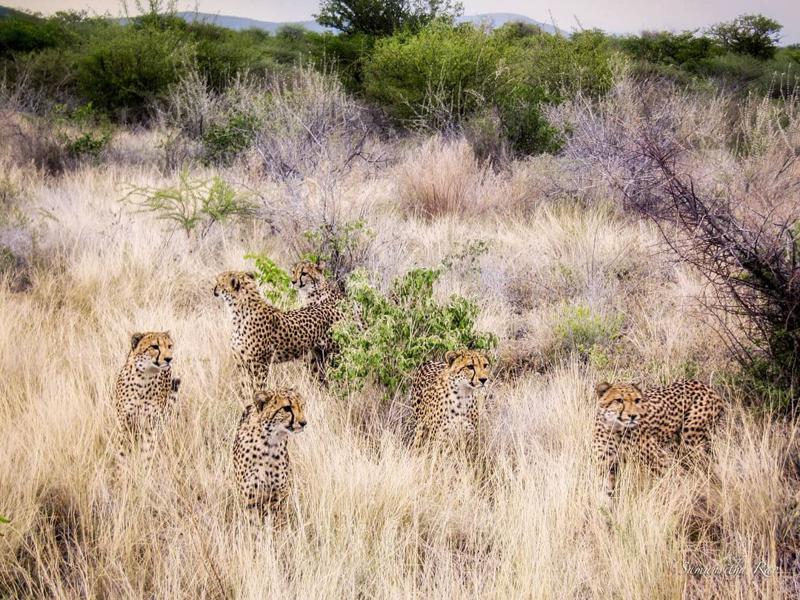
Southeast African Cheetah (Acinonyx jubatus jubatus) is probably the most strident Cheetah from all subspecies, with bright yellow to golden fur that becomes bright white on the underbelly and the animal’s neck and chest.
Although the underside is not that spotted, the black dots seem denser, especially in the animal’s head area, making the Southeast African Cheetah appear as one of the most densely spotted subspecies.
Other distinctions typical to this subspecies are the tear-like black stripes which are thicker at the lower ends, and a brown stain resembling a mustache.
The coloring of the tail tip can vary between individuals of the species from black-and-white to just a black-tipped tail.
Northeast African Cheetah
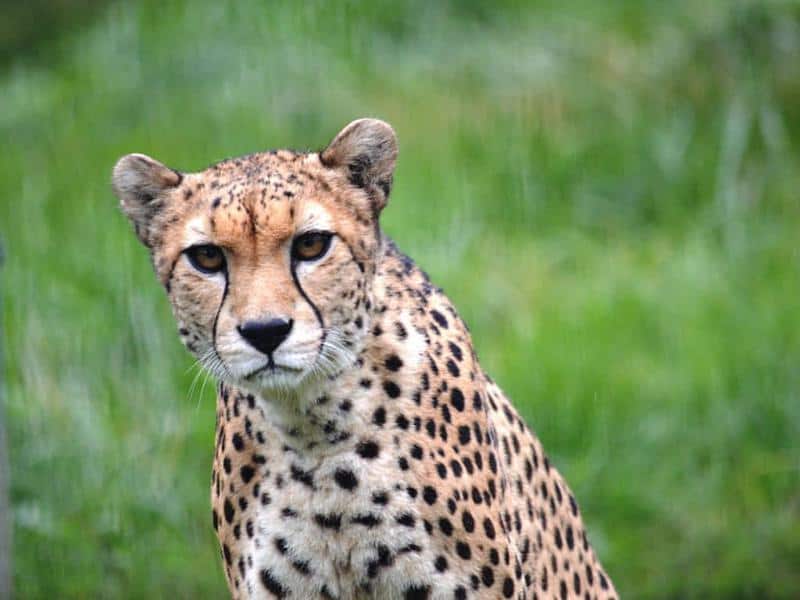
Northeast African Cheetah (Acinonyx jubatus soemmeringii) has the darkest fur of them all, with a distinctive tawny coat that turns into a perfect white on the belly.
Compared to its previous cousin, the Southeast African Cheetah, the Northeast African Cheetah has smaller black dots.
However, the dots are the most clearly separated and widest spread on the animal’s back, giving it the darkest color pattern of the cheetah subspecies.
The facial spotting density may vary, and, except for a few individuals from the Chandi population, this subspecies doesn’t have spotted rear legs.
Another characteristic typical to this subspecies is the visibly thicker tail (thickest of all cheetahs), usually with a black-and-white tip or a white tip only.
The tear-like stripe is much more irregular than the other subspecies but gets remarkably thicker in the lower end, near the corners of the mouth.
Northwest African Cheetah

Northwest African Cheetah (Acinonyx jubatus hecki/ senegalensis) seems an even further relative of the first three subspecies:
First of all, its background coat color is almost white on the entire body surface, and the face has very few black dots or none at all.
The typical black dots are black only along the animal’s spine and turn brown on the sides to light brown on the legs. The famous tear-like stripe is missing for most individuals of the subspecies.
The Northwest African Cheetah’s tail ends with black and white rings and a white tail tip.[1]
King Cheetah
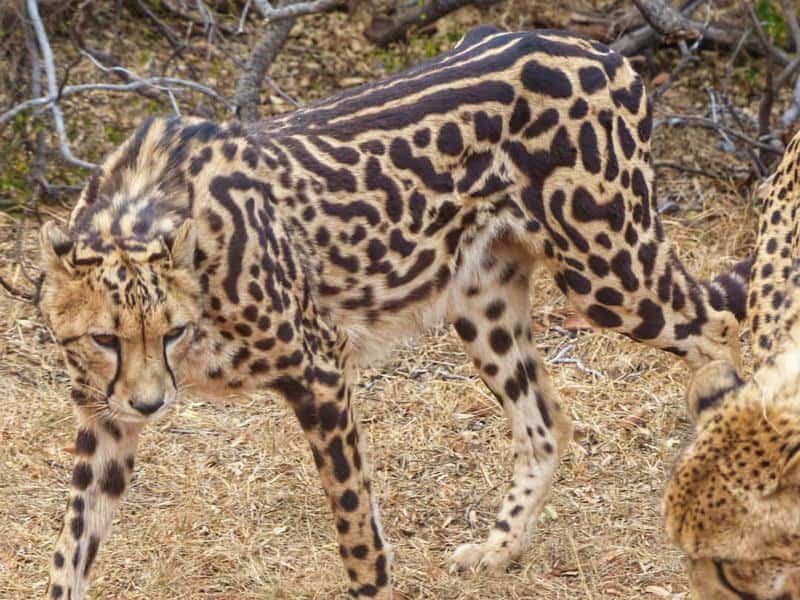
Due to a rare mutation, King Cheetah (Acinonyx rex, was proposed to be declared as subspecies but has been withdrawn from lack of evidence) is a variety of Cheetah with different color patterns from any subspecies.
The King Cheetah has a creamy background coat color but instead of dots, its fur is patched with large black irregular blotches.
What makes the King Cheetah even more distinctive are the three black broad stripes that cover the animal’s back, from the head to the tail.[2]
Did You Know?
- Compared to other big cats that roar (like lions, for example), the Cheetah purrs, meows, and chirps, sounding like a house cat playing with a puppy.[3]
- The Cheetah is a diurnal animal with an excellent sight. It observes the target while standing a long way in the distance, sometimes on a small mound; then, it races and chases its prey by sight before pouncing, wrestling the tired prey to the ground, and biting its neck.
- Due to narrow genetic diversity, clashes with humans, and illicit trades, the Cheetah is declared endangered, with less than seven thousand adult individuals in the wild.
Now we have clarified what different kinds of Cheetahs there are, with the image of their color patterns in mind, let’s see what makes the Leopard so different from the Cheetah…
Leopard
The Leopard (Panthera pardus) is the shortest of the big wild cats and, compared to the Cheetah, has a more massive, more muscular body and fierce force.
The body structure and the short limbs make the Leopard a slower cat, compared to Cheetah, barely reaching over half of the average speed of its cousin (58 kilometers per hour).
Although initially given to the Cheetah (remember the hunting leopard from earlier?), the name Leopard comes from the Greek words “leon”, which means “lion” and “pardos”, which translates as “spotted”.
However, the Latin name “Panther” comes from a hunting net used on savage beasts, utilised by the Romans in combat called “panthera”. The same phonetic group, from Sanscrit, translates as “white”, “whitish”, or “pale yellow”.
The most significant difference, and the topic of our article today, lies in the aspect of the fur and the print pattern.
The Leopard’s coat is soft and thick, with varying background colors from pale yellow to dark brown.
While the Cheetah has spots, the print pattern of the Leopard has black, irregular-shaped patches with tawny centers in the form of ‘roses’ (thus they have the name rosettes).
Unlike the Jaguar (which also has rosettes), the Leopard’s rosettes are smaller, less complex, more closely grouped, and missing the central dot.
The length between spots and the dark color within the rosettes varies so much that several subspecies of Leopard are currently recognized. [4]
Amur Leopard
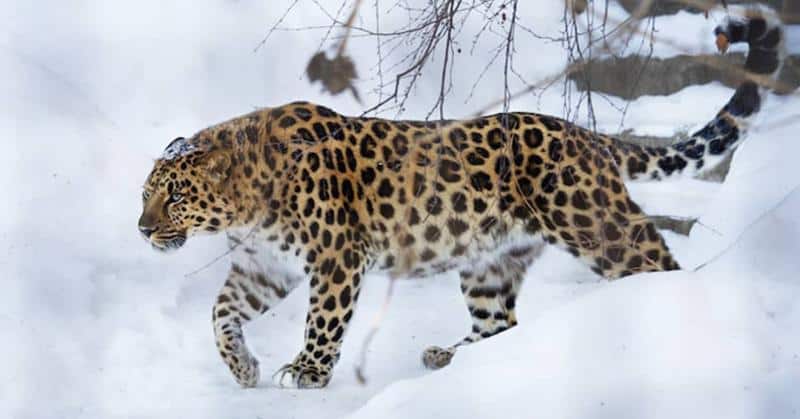
Amur Leopard (Panthera pardus orientalis) has the thickest fur of all the subspecies which gets even thicker in the wintertime.
The background color also changes: it varies from pale yellow to rusty-reddish yellow in the wintertime and gets brighter in the summertime, making the print pattern appear more intense.
The rosettes of the Amur Leopard have wide spaces between them, but they are also bigger, probably the biggest rosettes of all subspecies.
Indian Leopard
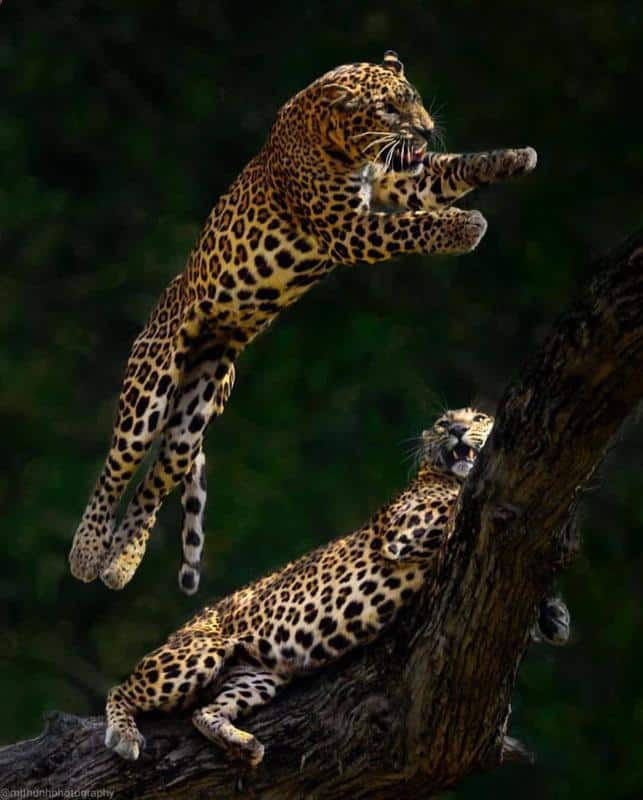
The Indian Leopard (Panthera pardus fusca) also has various background coat colors, from light yellow to golden or brown-yellow and turning white on the underbelly and the lower part of the legs.
The different shades of the background coat are an adaptation of the animal to the environment: the paler and creamy coats are adapted to dry areas, greyer coats are adapted to colder habitats, and golden/ darker coats help individuals living in the rainforest.
The Indian Leopard has big rosettes, distributed densely on the back, sides, and rear legs, and fading on the white areas parts of the animal.
African Leopard
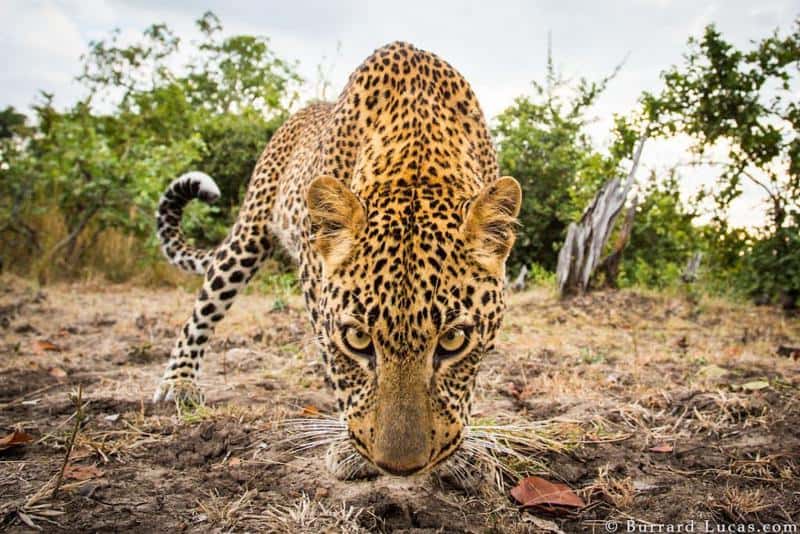
Due to the varying landscape the animal inhabits, the African Leopard’s background fur (Panthera pardus pardus), varies too, from yellow or intense gold to sandy or even black.
The animal also has rosette patterns, except for the head, back legs, and belly, where the African Leopard has intense black spots.
Indochinese Leopard
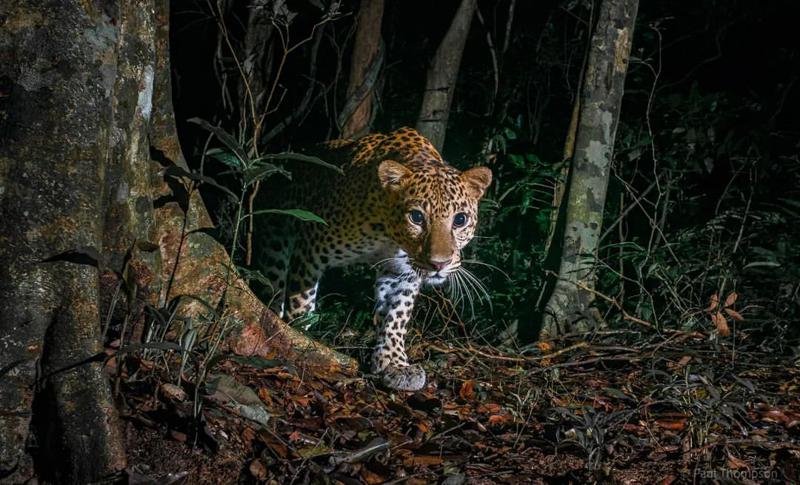
The Indochinese Leopard (Panthera pardos delacouri) has short-hair fur, with longer hair on its back.
The background fur color is rusty-red and lightens on the flanks, and the already small rosettes are so densely crowded that like spots at a glance.
Black Panther
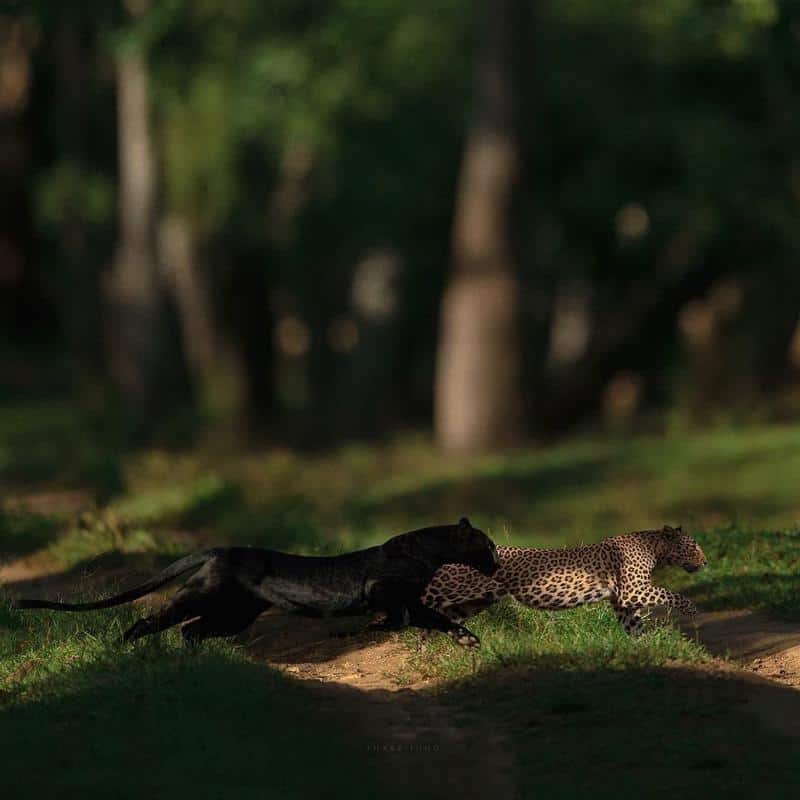
The Black Panther is a regular Leopard (Panthera pardus) or Jaguar (Panthera onca) with excessive black pigments, a phenomenon called “melanism”.
A recessive gene causes this to happen to leopards, and six subspecies have been reported with melanism: Javan, Ski Lankan, Indochinese, African, and Indian Leopard.
Although not visible in some individuals, the rosettes typical to the leopards are still present.
There have also been reports of leopards with excessive red pigmentation (the so-called “Pink Panthers”), the causes of which are still a mystery.
Did You Know?
- The Leopard is an excellent climber and jumper: it goes quickly up in the trees thanks to its fully retractive claws and can jump up to six meters.
- The leopard is a lonely and territorial animal: it uses feces, urine, and scratches the trees to mark its territory, otherwise crossed only for mating.
- The Leopard has such great strength that it can drag its sometimes hefty prey up in the trees to prevent other land-based predators or scavengers from stealing it.
Conclusions
The Cheetah has spotted print patterns, approximately two thousand round or oval dots, between two and five centimeters. These are intensely black and uniformly arranged.
The Leopard has irregular black dots, gathered around a light brown dot forming circular or square-ish clusters that resemble roses, these are therefore called rosettes.
The Cheetah has a golden background fur color, beige-white, or light brown that goes white on the animal’s chin, neck, belly, and the insides of the legs.
The Leopard has smooth and thick fur (thicker on the belly, thinner on the back), and the background color varies from pale yellow to intense, dark golden, fading to a whitish tone on the belly.
The black stripes resembling tears, unique to the Cheetah, start in the corners of the eyes, descend alongside the animal’s nose, and end at the corners of its mouth.
Besides the typical rosettes, the Leopard can be distinguished by its shorter legs, heavy, muscular body, and larger head.
The Cheetah’s tail is incredibly long (60-80 centimeters) compared to the animal’s size. It is covered around three quarters with dots, and ending with a tufted and sometimes black-striped tail tip.
The Leopard’s tail measures between 60 and 102 centimeters, has a white background color, and black spots which form incomplete rings towards the white tail tip.
Also Read: 10 Most Dangerous Cat Breeds on the Planet: Ultimate Guide With Pictures

